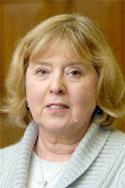PARAMEDICS in York will have to respond to 999 calls within only six minutes, under tough new national targets.
Yorkshire Ambulance Service (YAS) and similar bodies throughout the country, will have to react to urban emergencies two minutes quicker than at present.
A local spokesman today said meeting the demands was "not easy", but said YAS was maximising its chances by posting ambulances and rapid response vehicles near known "hotspots".
Ambulances and rapid response vehicles are increasingly based in lay-bys and places such as garages and supermarket car parks, and plans have now been submitted for a fixed base outside Acomb Library, in York.
The news comes just a few weeks after The Press revealed that the service was only meeting the eight-minute target for 60.7 per cent of life-threatening 999 calls.
Len Blakey, agent for the service, said meeting the new targets would not be easy. He said: "These changes will obviously bring benefits to the local population and road users as casualties will receive medical assistance faster - providing the ambulance service can meet the new targets.
"In an attempt to meet both the existing and especially the new targets, we have been deploying both ambulances and fast response vehicles at strategic points throughout Yorkshire.
"Currently, you may have seen vehicles parked in lay-bys, market squares and other hot-spots. These positions are determined from an analysis of past records, showing the density of calls and highlighting the geographical positions of the hotspots."
Ambulance and rapid response vehicles have already been parking outside the library, but the service now wants to establish itself more regularly and also set up a temporary portable building to provide some basic comforts for staff.
Mr Blakey said that if the base proved successful, they would look to set up permanent accommodation in the area.
Other hotspots in North Yorkshire include ones at Leeming Bar and Scarborough.
Last month, The Press revealed that YAS was meeting the eight-minute target for life-threatening "category A" emergencies only 60.7 per cent of the time. That figure was nine per cent below the regional and 15 per cent below the national target.
The poor performance was attributed to a controversial new call-handling system which was introduced to improve response times, but which staff have taken time to get used to. Local GPs reacted angrily, accusing the service of putting lives at risk.
Tina Funnell, chair of the council's health scrutiny committee, welcomed attempts to cut response times.
She said: "It obviously makes a great deal of sense to have ambulances out and about and scattered around. I have a lot of confidence in the ambulance service and how they have tried to respond to the changing needs of the population. They have been very innovative and creative in York."





Comments: Our rules
We want our comments to be a lively and valuable part of our community - a place where readers can debate and engage with the most important local issues. The ability to comment on our stories is a privilege, not a right, however, and that privilege may be withdrawn if it is abused or misused.
Please report any comments that break our rules.
Read the rules hereComments are closed on this article